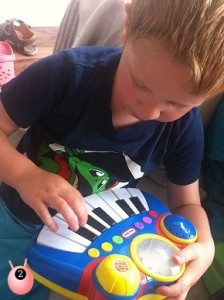

Clustering techniques have been adopted in an attempt to parse heterogeneity across these domains and describe sensory phenotypes. Many of these recent studies have used the short sensory profile (SSP ), which assesses sensory processing abilities across seven subscales including tactile sensitivity, taste and smell sensitivity, movement sensitivity, under responsivity and sensation seeking, auditory filtering, low energy and weakness, as well as visual and auditory sensitivity. As a whole, the autistic population shows sensory processing differences across all sensory domains, however, these differences are idiosyncratic when considering the different sensory modalities within an individual. With this addition to the DSM-5, there has been considerable research into sensory processing differences. Given the relevance of sensory processing abilities to the diagnosis and support of autistic individuals, hyper- or hypo-reactivity to sensory input or an unusual interest in sensory aspects of the environment was added as core diagnostic features of ASD (DSM-5 ). In addition, these sensory differences have been shown to be predictive of other functions including cognitive, social, and motor abilities. As our everyday lives are spent functioning in complex sensory environments, these sensory processing differences have been shown to promote challenging behaviours and distress in autistic individuals. Atypical reactions to the sensory environment are frequently reported in autistic individuals, with a high degree of variability across individuals and sensory modalities. Given the large degree of heterogeneity in sensory difficulties seen in the autistic population, these sensory phenotypes represent an effective way to parse that heterogeneity and create phenotypes that may aid in the development of effective treatments and interventions for sensory difficulties.Īutism spectrum disorder (ASD) is a neurodevelopmental condition characterized by persistent deficits in social communication and interaction and restricted, repetitive patterns of behaviour, interests, or activities. These findings suggest that sensory difficulties in autistic individuals can be clustered into sensory phenotypes, and that these phenotypes are associated with behavioural differences.

Further, as these data were obtained from established records from a large provincial database, not all measures were completed for all individuals. Autistic individuals with an intellectual disability were underrepresented in this sample. Further, not all measures are standardized, or psychometrically validated with an autism population. The results were based on parent-report measures of sensory processing, adaptive behaviour, traits associated with autism, attention-deficit and hyperactivity disorder, and obsessive and compulsive disorder, which may limit the generalizability of the findings.


Age, adaptive behaviour, and traits associated with autism, attention-deficit and hyperactivity disorder, and obsessive and compulsive disorder were found to differ significantly across the five phenotypes. ResultsĪ five-cluster model was found to minimize error variance and produce five sensory phenotypes: (1) sensory adaptive, (2) generalized sensory differences, (3) taste and smell sensitivity, (4) under-responsive and sensation seeking, and (5) movement difficulties with low energy. Analysis of variances compared age, adaptive behaviour, and traits associated with autism, attention-deficit and hyperactivity disorder, and obsessive and compulsive disorder across the resultant clusters. Short sensory profile data from 599 autistic children and adults between the ages of 1 and 21 years were subjected to a K-means cluster analysis. However, the manner in which these sensory differences cluster, and whether the resulting phenotypes are associated with specific cognitive and social challenges is unclear. Preliminary research suggests that specific sensory differences may cluster together within individuals creating discrete sensory phenotypes. These sensory differences have been shown to promote challenging behaviours and distress in autistic individuals and are predictive of other functions including motor, social, and cognitive abilities. Atypical reactions to the sensory environment are often reported in autistic individuals, with a high degree of variability across the sensory modalities.


 0 kommentar(er)
0 kommentar(er)
